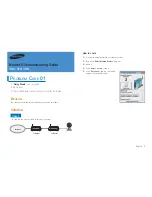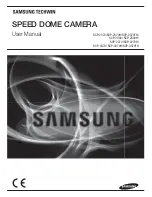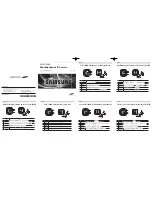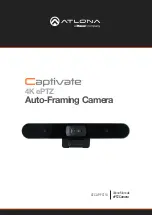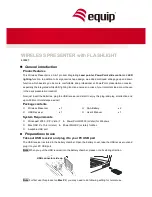
DSC-TX20_L2
1-1
1. SERVICE NOTE
1-1. WATER-PROOF, DUST-PROOF, AND SHOCK-PROOF
1-1-1. Water-proof, Dust-proof, and Shock-proof Performance
About water-proof, dust-proof, and shock-proof
performance of the camera
This camera is equipped to be water-proof, dust-proof and shock-proof.
Damage caused from misuse, abuse or failure to properly maintain the camera is not
covered by the limited warranty.
• This camera is water-proof/dust-proof equivalent to IEC60529 IP58. The camera is
operable up to a water depth of 5 m for 60 minutes.
• Do not subject the camera to pressurized water, such as from a tap.
• Do not use in hot springs.
• Use the camera in the recommended operating water temperature range of
–10°C to +40°C (14°F to 104°F).
• Conforming to MIL-STD 810F Method 516.5-Shock standards, this product has passed
testing when dropped from a height of 1.5 m above a 5-cm thick plywood board*.
* Depending on use conditions and circumstances, no guarantee is made regarding
damage to, malfunction of, or the water-proof performance of this camera.
• As for dust-proof/shock-proof performance, there is no guarantee that the camera will
not become scratched or dented.
• Sometimes water-proof performance is lost if the camera is subjected to a strong
shock such as from being dropped. We recommend the camera be inspected at an
authorized repair shop for a fee.
• Accessories supplied do not meet water-proof, dust-proof, and shock-proof
specifications.
Notes before using the camera under/near water
• Make sure that no foreign matter such as
sand, hair, or dirt gets inside the battery/
memory card cover or multi-connector
cover. Even a small amount of foreign
matter may lead to water entering the
camera.
• Confirm that the sealing gasket and its
mating surfaces have not become scratched.
Even a small scratch may lead to water
entering the camera. If the sealing gasket or
its mating surfaces become scratched, take
the camera to an authorized repair shop to
have the sealing gasket replaced for a fee.
• If dirt or sand gets on the sealing gasket or
its mating surfaces, wipe the area clean with
a soft cloth that will not leave behind any
fibers. Prevent the sealing gasket from
becoming scratched by touching it while
charging a battery or using a cable.
• Do not open/close the battery/memory card cover or multi-connector cover with wet
or sandy hands or near water. There is a risk this will lead to sand or water getting inside.
Before opening the cover, perform the procedure described in “Cleaning after using the
camera under/near water”.
• Open the battery/memory card cover and multi-connector cover with the camera completely dry.
• Always confirm that the battery/memory card cover and multi-connector cover have been
securely locked.
Notes on using the camera under/near water
• The touch panel may be activated by water splashes on the screen icons. When using
the camera under/near water, it is recommended that you hide the icons by touching
on the right side of the screen. Touch for a few seconds to display the icons again.
• The touch panel cannot be operated underwater. Use the buttons of the camera to perform
shooting operations.
• Do not subject the camera to shock such as from jumping into water.
• Do not open and close the battery/memory card cover or multi-connector cover while
under/near water.
• Use a separately available housing (Marine Pack) if going more than 5 meters under water.
• This camera sinks in water. Place your hand through the wrist strap to prevent the camera
from sinking.
• Faint, white, circular spots may appear in under-water flash photos due to reflections off
of floating objects. This is not a malfunction.
• Select
(Underwater) in Scene Selection to shoot underwater with less distortion.
• If water drops or other foreign matter is present on the lens, you will be unable to record
clear images.
• Do not open the lens cover where the sand is whirling.
Cleaning after using the camera under/near
water
• Always clean the camera with water after use
within 60 minutes, and do not open the battery/
memory card cover or multi-connector cover
before cleaning is finished.
Sand or water may get inside places where it
cannot be seen. If not rinsed, water-proof
performance will be degraded.
• Allow the camera to sit in pure water poured into a cleaning bowl for about 5 minutes.
Then, gently shake the camera, press each button, slide the zoom lever or the lens cover
inside the water, to clean away any salt, sand or other matter lodged around the buttons
or the lens cover.
• After rinsing, wipe away water drops with a soft cloth. Allow the camera to dry completely
in a shady location with good ventilation. Do not blow dry with a hair dryer as there is a risk
of deformation and/or degraded waterproof performance.
• Wipe away water drops or dust on the memory card/battery cover or terminal cover with
a soft dry cloth.
• This camera is constructed to drain water. Water will drain from openings around the
ON/OFF (Power) button, zoom lever, and other controls. After removing from water,
place the camera on a dry cloth for a while to allow water to drain.
• Bubbles may appear when the camera is placed under water. This is not a malfunction.
• The camera body may become discolored if it comes in contact with sunscreen or suntan
oil. If the camera does come in contact with sunscreen or suntan oil, quickly wipe it clean.
• Do not allow the camera to sit with salt water inside or on the surface. This may lead to
corrosion or discoloration, and degradation of water-proof performance.
• To maintain the water-proof performance, we recommend that once a year you take the
camera to your dealer, or to an authorized repair shop, to have the sealing gasket of the
battery/memory card cover, or of the multiconnector cover replaced for a fee.
Sealing gasket
Surface contacting the
sealing gasket
– ENGLISH –




















